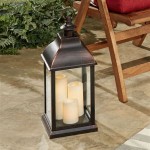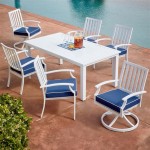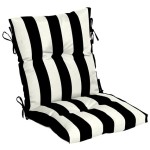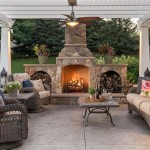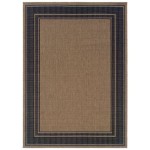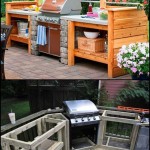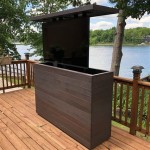Enhancing Outdoor Spaces: A Comprehensive Guide to Outdoor String Lights Set Up
Outdoor string lights offer a versatile and aesthetically pleasing way to illuminate patios, decks, gardens, and other external areas. They provide ambient lighting, enhance the atmosphere for gatherings, and extend the usability of outdoor spaces into the evening. A successful outdoor string light setup requires careful planning, appropriate materials, and safe installation practices to ensure longevity and optimal performance. This article provides a comprehensive guide to setting up outdoor string lights effectively and safely.
Planning and Preparation: Assessing Your Space and Choosing the Right Lights
The foundation of a successful outdoor string light installation lies in meticulous planning and preparation. This phase involves evaluating the intended space, determining the desired aesthetic, and selecting the appropriate type and quantity of lights for the project. A lack of foresight can lead to safety hazards, aesthetic disappointments, and increased installation time.
First, assess the area where the string lights will be installed. Consider the size and shape of the space, existing structures such as trees, fences, and buildings, and any potential obstacles. Measure the distances between potential anchor points, which will be used to support the string lights. This measurement is crucial for determining the total length of string lights required. Add extra length (approximately 10-15%) to account for slack and connections to power sources.
Next, evaluate the desired ambiance. Different types of string lights offer varying levels of brightness and color temperature. Consider the intended use of the space – a warm, dim glow might be suitable for a relaxing patio, while brighter lights may be necessary for outdoor dining or entertaining. Factors such as bulb type (LED, incandescent, or halogen), bulb size, and spacing between bulbs should all be taken into account when selecting the lights.
Choose string lights specifically designed for outdoor use. These lights are typically constructed with weatherproof materials and are rated for exposure to rain, snow, and sunlight. Look for lights with a UL (Underwriters Laboratories) or ETL (Electrical Testing Laboratories) listing, which indicates that they have been tested and certified for safety and performance. The Ingress Protection (IP) rating, specifically IP44 or higher, indicates the level of protection against solid objects and water.
Finally, determine the power source. Outdoor lights can be powered by plugging into an electrical outlet or using solar panels. If using an electrical outlet, ensure it is a ground-fault circuit interrupter (GFCI) outlet, which provides protection against electrical shock. Consider the distance from the outlet to the starting point of the string lights and determine if an extension cord is needed. If using solar-powered lights, ensure they are placed in an area that receives sufficient sunlight to charge the batteries.
Securing and Supporting the String Lights: Installation Techniques and Hardware
Properly securing and supporting outdoor string lights is essential for safety, aesthetics, and longevity. Insufficient support can lead to sagging, damage to the lights, and potential hazards. Utilizing appropriate hardware and installation techniques is paramount for a professional and secure installation.
Anchor points are critical for supporting the string lights. Natural supports include trees, fences, and existing structures. For areas without natural anchor points, consider installing posts or using existing building features like eaves or gutters. When using trees, avoid attaching lights directly to the trunk or branches, as this can damage the tree over time. Instead, use tree-friendly straps or ropes to create anchor points.
Various hardware options can be used to secure the string lights to the anchor points. Screw-in hooks, eye hooks, and wire tensioners are common choices. Screw-in hooks are easy to install and provide a secure attachment point. Eye hooks can be paired with S-hooks or carabiners for easy installation and removal of the lights. Wire tensioners, also known as turnbuckles, allow you to adjust the tension of the string and prevent sagging. Choose hardware made from rust-resistant materials such as stainless steel or galvanized steel to withstand outdoor conditions.
Different methods can be employed for hanging the string lights, depending on the desired look and the available anchor points. A common approach is to use guide wires or cables. These wires are strung between anchor points and provide a sturdy support for the lights. Use wire rope clips to secure the wire to the anchor points and tighten the tensioner to remove any slack. The string lights can then be attached to the guide wire using zip ties, S-hooks, or carabiners. Ensure that the weight of the lights is evenly distributed along the guide wire to prevent excessive sagging.
Another method is to hang the lights directly from the anchor points in a zig-zag or draped pattern. This approach is suitable for smaller spaces or when a more casual look is desired. Use S-hooks or carabiners to attach the lights to the anchor points, ensuring that the lights are evenly spaced and that there is sufficient slack to prevent strain on the bulbs and wiring.
When installing string lights around trees, avoid wrapping the lights tightly around branches, as this can restrict growth and potentially damage the tree. Use tree-friendly straps or ropes to create a hanging point while allowing room for the tree to grow. Ensure that the lights are not touching any flammable materials, such as leaves or dry branches.
Electrical Safety and Maintenance: Ensuring Longevity and Preventing Hazards
Prioritizing electrical safety is crucial when setting up outdoor string lights. Improper installation or maintenance can lead to electrical shock, fire hazards, and damage to property. Adhering to safety guidelines and performing regular maintenance are essential for ensuring the longevity and safe operation of the lights.
Before starting any electrical work, disconnect the power to the outlet you will be using. This will prevent accidental electrical shock. Always use a ground-fault circuit interrupter (GFCI) outlet for outdoor electrical connections. A GFCI outlet will automatically shut off power if it detects a ground fault, which can prevent serious injury.
Inspect the string lights and extension cords for any signs of damage before installation. Check for frayed wires, cracked insulation, or loose connections. Do not use any lights or cords that are damaged, as they can pose a safety hazard. Ensure that all connections are secure and weatherproof to prevent water from entering the electrical components.
Avoid overloading electrical circuits. Check the wattage rating of the string lights and the capacity of the electrical circuit. Do not exceed the maximum wattage allowed for the circuit, as this can cause the circuit breaker to trip or even start a fire. If you are unsure about the circuit capacity, consult with a qualified electrician.
Keep the string lights away from flammable materials, such as dry leaves, branches, or fabric. Ensure that the lights are not touching any surfaces that could become hot, such as metal roofs or siding. Regularly inspect the lights for any signs of overheating or damage.
Proper maintenance is essential for extending the lifespan of outdoor string lights. Clean the lights regularly to remove dirt, dust, and debris. Use a soft cloth and mild detergent to clean the bulbs and wiring. Avoid using harsh chemicals or abrasive cleaners, as they can damage the lights. Check the connections periodically to ensure they are still secure and weatherproof. Replace any damaged bulbs or wiring immediately.
During periods of heavy rain, snow, or high winds, it is advisable to unplug the string lights to prevent damage. Consider storing the lights indoors during the off-season to protect them from the elements. When storing the lights, coil them neatly and avoid kinking the wires. Store them in a dry, cool place away from direct sunlight.
By following these guidelines for planning, installation, and maintenance, individuals can effectively and safely set up outdoor string lights to enhance their outdoor spaces and create a welcoming atmosphere.

28 Backyard Lighting Ideas How To Hang Outdoor String Lights

How To Hang Patio Lights

How To Hang String Lights Outdoors

How To Choose The Best Outdoor String Lights

How To Hang String Lights Outdoors

Diy Patio Arbor Using String Lights The Honeycomb Home

10 Ways To Use Led String Lights For Magical Patios And Special Events

Diy Outdoor Patio String Lights National Hardware

How To Hang Patio Lights

Outdoor String Light Ideas Oclights

